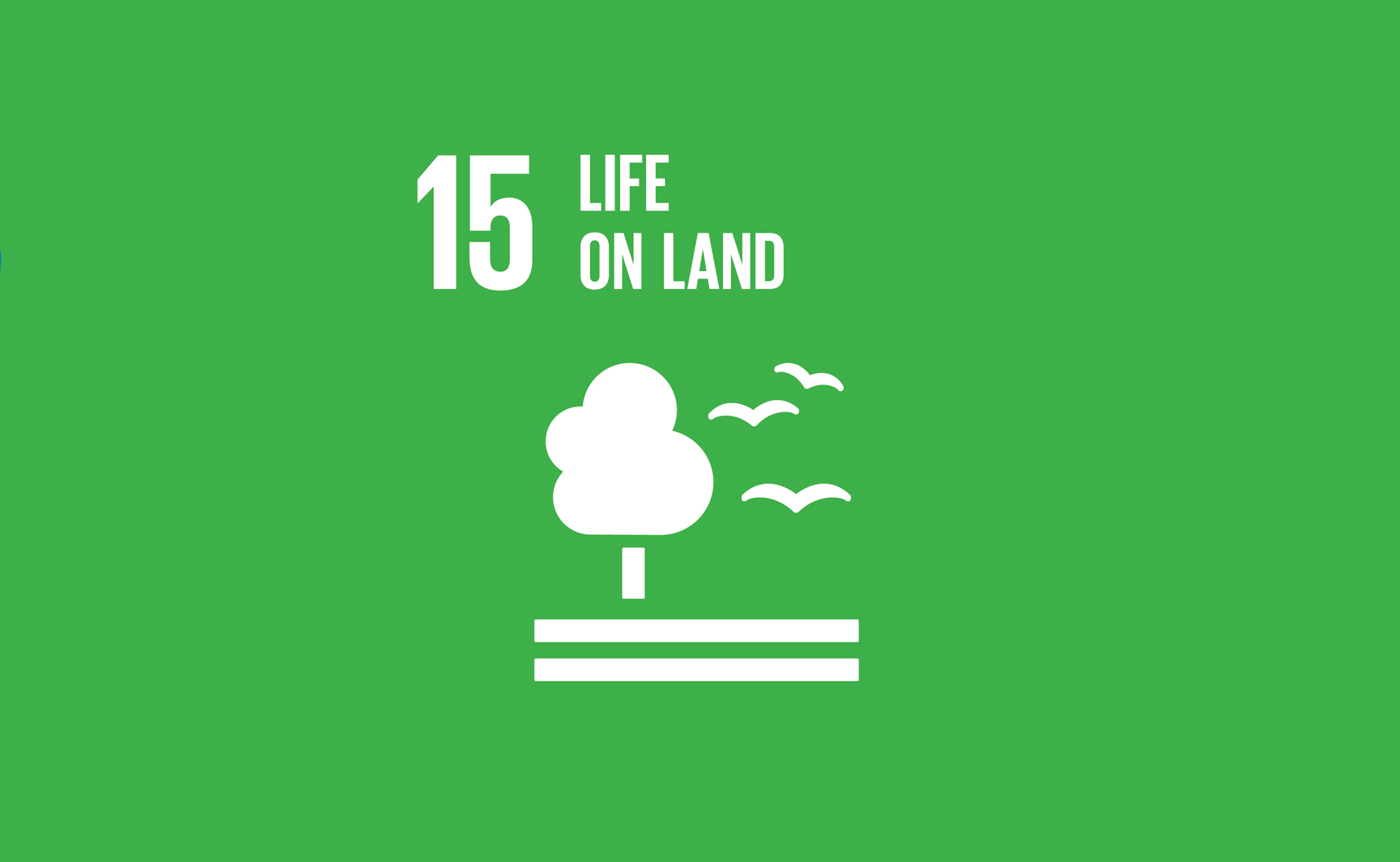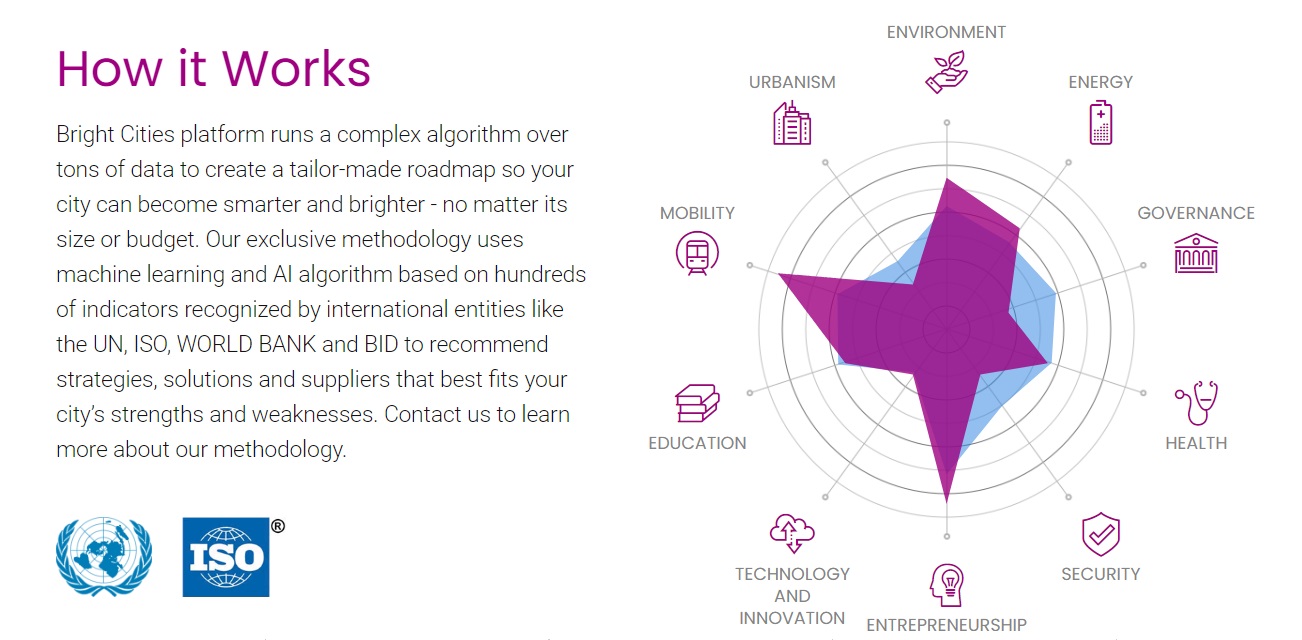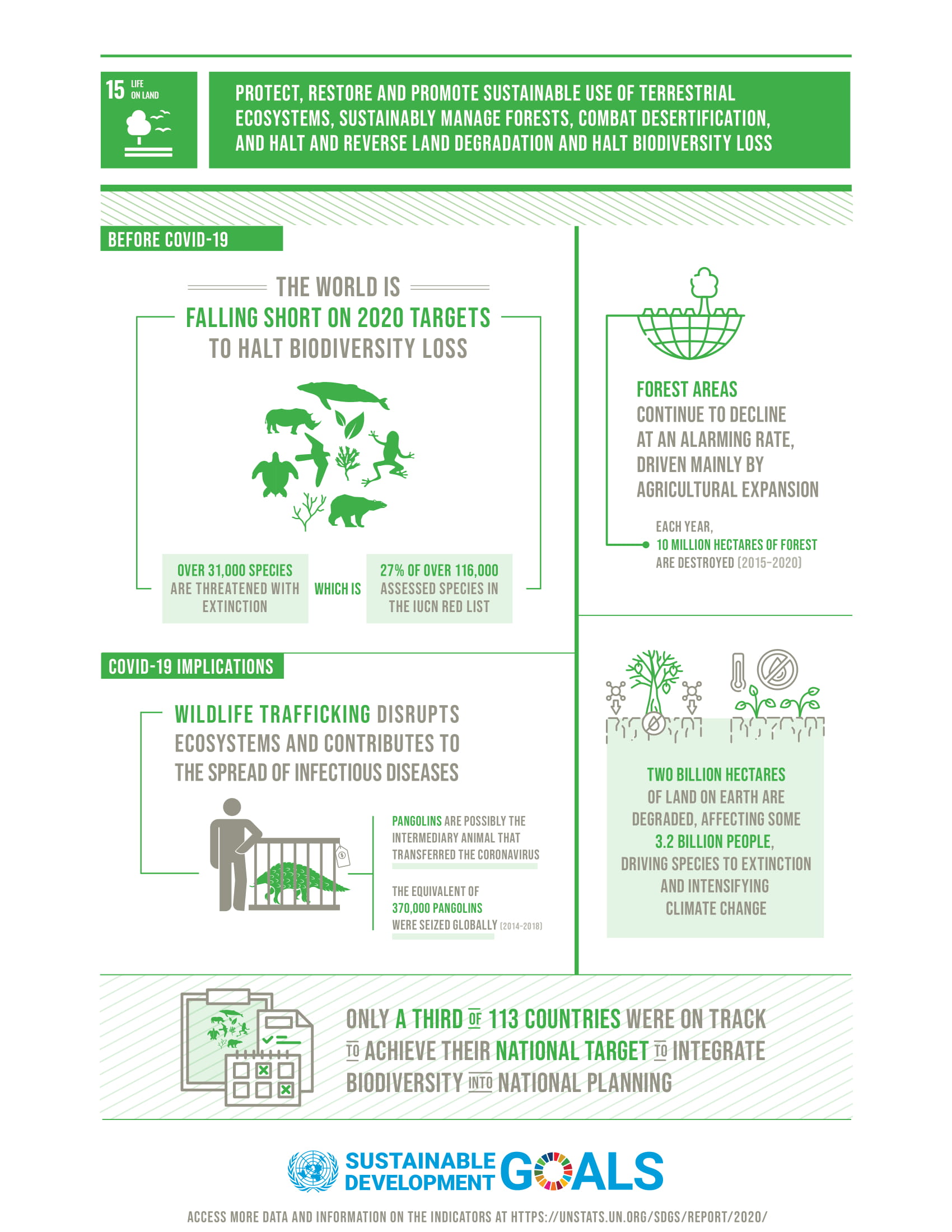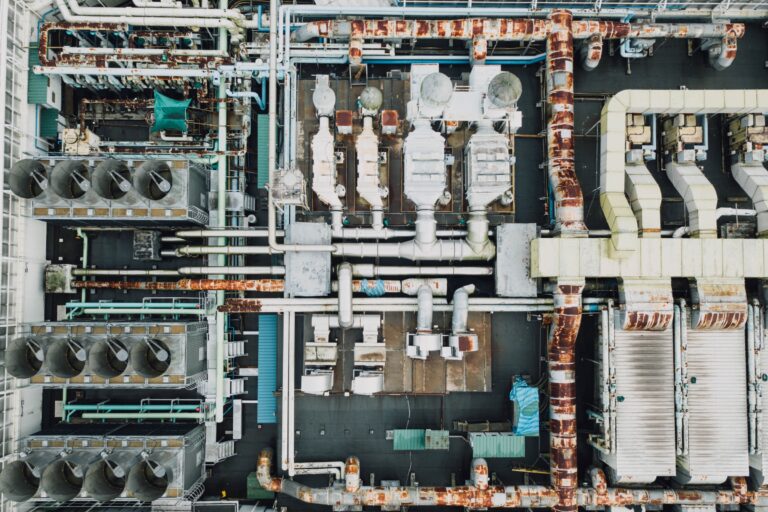Protect, restore and promote sustainable use of terrestrial ecosystems is the fifteenth goal of the 2030 Agenda for Sustainable Development

It is a fact that the planet has been undergoing worrying changes in recent decades, and there is no one who should be held more responsible for these changes than us, humans. From the greenhouse effects to the possible extinction of more than 1 million plant and animal species, our actions on forests, ecosystems and environmental resources have already been responsible for altering 75% of the earth’s surface, says the UN.
It seems obvious, but it is worth remembering: preserving the environment, something we are not doing, is necessary if we want to guarantee our own survival. It is worth mentioning the role of forests, which cover 30% of the planet’s territory and are home to more than 80% of all species of animals, plants and terrestrial insects. Trees, for exemple, are essential for absorbing carbon from the atmosphere, one of the most harmful gases responsible for climate warming. They are also the ones that regulate the humidity and temperature of the Earth and protect countless vital resources for our life, such as rivers, food and even medicinal substances.
Nature’s role in human life led the UN to include SDG 15 – Life on land among its 17 Sustainable Development Goals. With the mission of “protecting, recovering and promoting the sustainable use of terrestrial ecosystems“, the goal supports and guides measures towards a sustainable management of forests, the end of nature’s degradation, the fight against desertification and the preservation of our biodiversity. All of these combined efforts want to ensure that the benefits of land-based ecosystems, including sustainable livelihoods, are enjoyed by our future generations.
In a Smart City, environmental preservation is a synonymous of quality of life. Expert on the subject, Bright Cities helps cities of any scale or nationality to improve the municipal management with environmental preservation as one of its main pillars. That is why, when we diagnose a city, the Environment is precisely one of the ten urban areas considered by our platform.
We believe that nature should receive the same importance as issues such as health, urbanism and energy – after all, Smart Cities are always Sustainable. A smart city recognizes the importance of preserving its biodiversity not only for environmental reasons, but because it knows that its reflections can be felt in all aspects of a city.
We can say, for example, that the risks of deforestation and the resulting desertification of the territory can affect food production and prevents cities from achieving SDG 2 – Zero Hunger and Sustainable Agriculture. As the UN says, 13 million hectares of forests are lost each year, while the persistent degradation of arid lands has already led to the desertification of 3.6 billion hectares across the planet.
The impact on agribusiness production, or even the possible losses on resources such as rivers and minerals, also affects the economy and the success of SDG 8 – Decent work and Economic growth. It is also worth mentioning the importance of more sustainable energies, as stated in SDG 7 – Clean and Accessible Energy, because of the damage caused by the unbridled use of fossil fuels.
Talking about the environment means also talking about health, especially the control of zoonoses (diseases that are transmissible between animals and humans). As we continue to invade fragile ecosystems, we put humans in increasing contact with wildlife and increase the risk of diseases sand contaminating, which goes against SDG 3 – Health and Well-Being.

For the complete diagnosis of a city to be carried out, Bright Cities collects and evaluates data obtained by 160 international indicators, 21 of them exclusively focused on environment issues and also aligned with SDG 15 – Terrestrial Life. We listed some of the indicators below to tell you why they are an important tool for cities to meet the goals established by this important global action plan:
- Indicator “Green areas”: the data obtained reveal the percentage and proportion of areas covered by vegetation in the city. With these informations in hand, city administrators can evaluate whether there are areas of deforestation and whether the population has adequate access to spaces such as green reserves , squares and parks, as established by target 15.1 of SDG 15: “By 2020, ensure the conservation, restoration and sustainable use of terrestrial and inland freshwater ecosystems and their services, in particular forests, wetlands, mountains and drylands, in line with obligations under international agreements“;
- Indicator “Number of trees planted per year”: the indicator reveals whether a city acts to preserve or restore its vegetation, as mentioned in target 15.9 of SDG 15: “By 2020, integrate ecosystem and biodiversity values into national and local planning, development processes, poverty reduction strategies and accounts”;
- Indicator “Percentage of solid city waste recycled”: the data collected by the indicator reveal the municipality’s ability to properly handle and treat its waste to avoid damage to the ecosystem, as required by target 15.5. of SDG 15: “Take urgent and significant action to reduce the degradation of natural habitats, halt the loss of biodiversity and, by 2020, protect and prevent the extinction of threatened species“.
Based on the collection, analysis and comparison of the data obtained with the indicators, our diagnosis evaluates where and how a city can best help its natural resources, and later we create a personalized development guide step by step. In it, we point out a series of smart solutions to solve urban problems, with respective costs, deadlines and supplier indications – our platform has a database of more than 1.000 smart solutions for smart cities, the largest in the world!
There you can find over 200 initiatives focused on the environment, such as the Hexagon Agriculture solution. The technology transforms data into actionable information and intelligence that allow planning, efficient implementation in the field controls, precise machinery and automated workflows to streamline operations and increase profits.
Another solution is Smart Green, an air monitoring system. The system measures data on gas and particle concentrations and meteorological data to give real time air quality information. Remote stations are able to measure gases (CO, NOX, SO2, O3, hydrocarbons and BTX, etc.), particles, meteorological parameters and noise levels.It offers personalized technological solutions to monitor environmental impact: monitoring and control of air quality and its impact on the public; centralized management and control of the efficiency of irrigation systems in accordance with soil and weather conditions; monitoring and control of the city’s weather parameters; control of the management of solid urban waste plants.
Solutions like these are increasingly important for reversing the urban damage generated in the terrestrial territory, and which unfortunately does not stop growing. The impacts go beyond the environment and directly affect the economy, as the UN says: land degradation has reduced land productivity by 23%, and about US $ 235 billion in global annual crops are at risk as a result of loss of land.
Some other data mentioned by the UN also indicate that we are far from reaching the goals of SDG 15:
- About 1.6 billion people depend on forests for their livelihood. This includes 70 million indigenous people;
- Forests are home to more than 80% of all species of terrestrial animals, plants and insects;
- 2.6 billion people depend directly on agriculture, but 52% of the land used for agriculture is moderately or severely affected by soil degradation;
- Of the 8,300 known animal breeds, 8% are extinct and 22% are at risk of extinction;
- 80% of people living in rural areas in developing countries depend on traditional plant medicine for basic health care;
- Protected areas cover only 15% of terrestrial environments.

Brazil, which is home to approximately 20% of the world’s biodiversity and also has a rich sociodiversity, represented by more than 200 indigenous tribes, has great responsibility. Unfortunately, environmental policies in the country seem to gain less and less importance: according to the Global Forest Watch platform, Brazil was the nation that most deforested primary forests in the world in 2018. Only in the Amazon, according to the Folha de S. Paulo newspaper, the devastation grew 34% from August 2019 to July 2020.
The country goes against the rest of the world, which increasingly values and supports sustainable initiatives. Large companies like Microsoft are leading the recent movement to adopt environmental, social and corporate governance criteria in their businesses, the so-called ESG. According to estimates by SDG Compass, 2 to 5 trillion dollars in business are lost each year with deforestation.
The power that our cities have in hand to guarantee the security and preservation of our ecosystems is enormous, and there are a lot of actions that we can take to achieve SDG 15. In a Smart City, sustainable policies dictate actions such as:
- Measure and manage the impacts of urban activities on ecosystems and natural resources;
- Expand practices for planning and managing land use, including agricultural activities, recycling and sanitation;
- Invest in sustainable infrastructure, such as clean energy;
- Finance and protect conservation and reforestation programs;
- Expand and inspect markets for responsible forest products and, thus, support sustainable forest management;
- Support and guarantee advantages for industries and companies that adopt sustainable policies and programs;
- Create environmental awareness programs;
- Bright Cities believes that the adoption of policies like these can be carried out by any city, and our service precisely helps them to do so. We carry out the complete work of diagnosing and creating an action plan to improve municipal management, always guided by the preservation of the environment and the responsible use of natural resources.
Bright Cities believes that the adoption of policies like these can be carried out by any city, and our service precisely helps them to do so. We develop complet diagnosis and roadmaps to improve the municipal management, always guided by the preservation of the environment and the responsible use of natural resources.
To learn more about our work, check out the special content we have prepared presenting the platform. If you want to know more about Smart Cities and how your city can become one, download our free e-book “How to transform your city into a Smart City” (in portuguese).
Upgrade your city!




